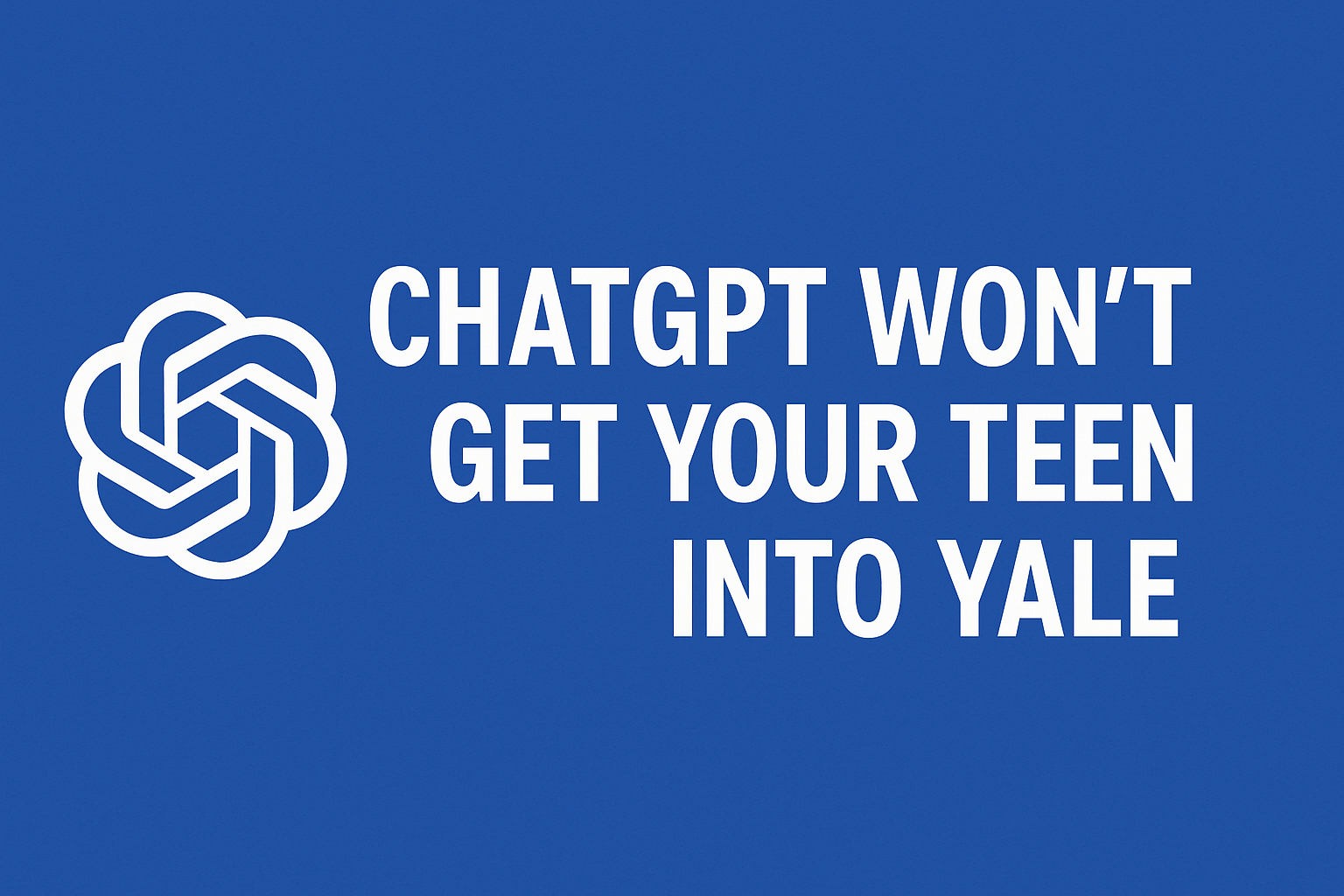This page is licensed under Creative Commons under Attribution 4.0 International. Anyone can share content from this page, with attribution and link to College MatchPoint requested.
ChatGPT Won’t Get Your Teen Into Yale: 5 Ways To Spot the Limits of AI in College Admissions Advice
Many families are leaning on ChatGPT for help with college admissions. It feels quick, polished, and always available. Type in a question about essays, activities, or deadlines, and an answer appears in seconds. For parents navigating the stress of applications, it can seem like a lifesaver.
But here is the truth. ChatGPT will not get your teen into Yale, Stanford, or any other highly selective school. AI can help in some areas, but it cannot replace originality, strategy, or the human insight that top colleges expect. To use it wisely, families need to recognize its limits. Here are five ways to spot them.

1. AI writes to the middle
ChatGPT is trained to generate responses that reflect patterns in data. The results sound tidy but often reflect what most students are already doing. If your teen asks about political science activities, you will see a list that includes debate, Model UN, and student government. These options are fine but they are also predictable. Selective colleges are not seeking averages. They are seeking applicants who show uncommon initiative and creativity.
2. It handles facts, not strategy
AI can be reliable for simple facts. You can ask about deadlines or the difference between Early Action and Early Decision, and it will provide a general overview. Still, families should always double check with official college websites. Where ChatGPT struggles is with strategy. It cannot tell the difference between an essay idea that feels authentic and one that admissions officers have read hundreds of times. True strategy depends on judgment and context, not pattern recognition.
3. It misses what is not there
The advice from ChatGPT often looks complete at first glance, but the gaps are important. If your teen asks about summer programs in engineering, the list may include expensive national programs. What it may not include are local or low cost opportunities, or ways to combine engineering with music, art, or other interests. The details that make an application memorable often fall into those overlooked spaces. Families must notice what is missing and think creatively about how to fill it in.
4. It can brainstorm, but not build
ChatGPT is most helpful when used as a brainstorming partner. It can provide lists of essay prompts or activity ideas. The student still has to sift through those options, discard the generic ones, and choose the paths that feel real. Colleges are not admitting a list of ideas. They are admitting a person. The shift from raw ideas to authentic storytelling is where human guidance matters most.
5. It depends on the questions you ask
The quality of the response often depends on the specificity of the question. A vague prompt such as “What activities impress Ivy League schools” will bring back generic answers. A sharper question such as “How can I connect my interest in neuroscience with theater” is more likely to yield creative suggestions. Even then, the student must step back and ask whether the idea feels true and sustainable. That final test is one no tool can pass for them.


